After reopening the government, Congress has given themselves until January 30 to finalize funding decisions, including how much to invest in child care and early learning programs. We’re encouraged to see the government shutdown finally come to an end—this is a step forward and affirms the direction child care advocates have been pushing for. With federal agencies reopening, critical funding for programs like SNAP, WIC, and Head Start should begin flowing again.
These past weeks have shown just how essential these programs are to the health and well-being of our communities. And although funding has resumed, many families will still feel the effects of policy decisions already in motion. For SNAP, families will see cuts to the program passed this past summer in H.R. 1 begin to go into effect even with a full year of funding secured.
______________________________________________________________________________________________________
As of October 1, the federal government shut down after Congress failed to reach a funding agreement for FY26. While the federal programs supporting child care are not expected to have funding or operations impacted for the time being, many other vital programs won’t be able to run as usual. Government shutdowns create real harm for families and communities across the country.
Why shutdowns matter: When the government shuts down, essential services are disrupted, federal employees face uncertainty, and economic ripple effects spread throughout communities. Families already stretched thin face additional stress and instability.
The bigger picture: This shutdown highlights the ongoing challenges Congress faces in funding the programs families depend on. While we work through this immediate crisis, the fundamental need for strong, sustained investment in child care remains unchanged.
This page was updated as the situation unfolded. Scroll down for more information about how federal funding works.
Here’s what we know so far:
Child Care and Development Block Grant (CCDBG)
The Child Care and Development Block Grant (CCDBG) provides funding for child care subsidies for working families with low incomes and to improve the quality of child care. The funding is distributed through a block grant and the program is administered by states, territories, and tribal entities. Learn more here.
States have CCDBG funding available to draw down and would not face issues until there is a prolonged shutdown.
Head Start
Head Start programs support children's growth from birth to age 5 through services centered around early learning and development, health, and family well-being.
The National Head Start Association says that "due to the timing of federal grants, six Head Start programs serving 6,525 children are already operating without federal funding, drawing on emergency local resources to stay open. By November 1, 2025, another 134 programs across 41 states and Puerto Rico, serving 58,627 children, will face the same cliff unless Congress and the president act swiftly." NHSA is maintaining a list of confirmed program closures.
Supplemental Nutrition Assistance Program (SNAP)
SNAP provides food benefits to families with low incomes to supplement their grocery budget so they can afford nutritious food that is essential to health and well-being.
The U.S. Department of Agriculture is suspending all November 2025 benefit allotments to states. As a result, 25 states and the District of Columbia have filed a lawsuit over whether approximately $5 billion in multi-year contingency funds from the USDA can be used to continue funding SNAP benefits and state administrative costs during a federal government shutdown. As of November 3, following court rulings, the Administration announced it will partially fund November benefits.
Special Supplemental Nutrition Program for Women, Infants, and Children (WIC)
WIC is a federal nutrition program that provides nearly 7 million eligible nutritionally at-risk pregnant, postpartum, and breastfeeding individuals, infants, and children up to 5 years old, with nutritious foods, education and counseling, and referrals to health care and social services.
WIC participants are advised to continue using their benefits and attend scheduled appointments as usual. If a shutdown is prolonged, state agencies may draw upon reserve funds, such as a federal contingency fund or unspent grants from the previous fiscal year, to keep the program operational.
Additional stopgap funding has been provided to states as of November 3.
Child and Adult Care Food Program (CACFP)
The Child and Adult Care Food Program (CACFP) is a federal program that provides reimbursements for nutritious meals and snacks to eligible children and adults. The National CACFP Foundation says states are reporting that they have successfully received funding for November reimbursements for CACFP.
Furloughed Federal Employees
Starting Friday, October 24, many of the roughly 2.4 million federal employees will miss their first full paycheck.
Military Fee Assistance Programs
Child Care Aware® of America is proud to partner with the United States Military and Department of Defense to serve and support their families through the Fee Assistance and Respite Child Care Programs.
As it stands right now there is no change to any of the military fee assistance programs. Any such change would be communicated by the Department of Defense to families and also to contracted third party administrators, which include Child Care Aware® of America.
Background
The federal funding process:
The U.S. Constitution gives Congress the “power of the purse,” meaning it controls how the federal government is funded.
There are two types of federal funding:
- Mandatory spending makes up about two-thirds of the budget. It’s set by law and doesn’t need yearly approval. This includes programs like Social Security, Medicare, and Medicaid.
- Discretionary spending must be approved by Congress each year through the appropriations process. It covers areas like defense, transportation, and child care and education programs.
Each year, Congress must decide funding levels for discretionary programs for the next fiscal year (October 1 – September 30). If it doesn’t:
- Congress can pass a Continuing Resolution (CR) to temporarily extend last year’s funding levels while it works on a full budget.
- The government shuts down, stopping funding for many programs and placing “non-essential” federal employees on temporary leave until funding is approved.
Learn more about how federal funding for child care works here.
Before the shutdown:
As a reminder, both the House and Senate passed Appropriations bills with funding proposals for child care and early learning programs, with level funding in the House and a slight funding bump in the Senate. Congress was not able to come to an agreement and pass a final package before October 1st.
Get Engaged
As always, you can continue to lift up the importance of child care funding. When Congress is ready, they will need to hear these messages.
And if you want to see more updates like this, join our Advocacy community to get the latest child care policy updates and advocacy opportunities by submitting the form below.





